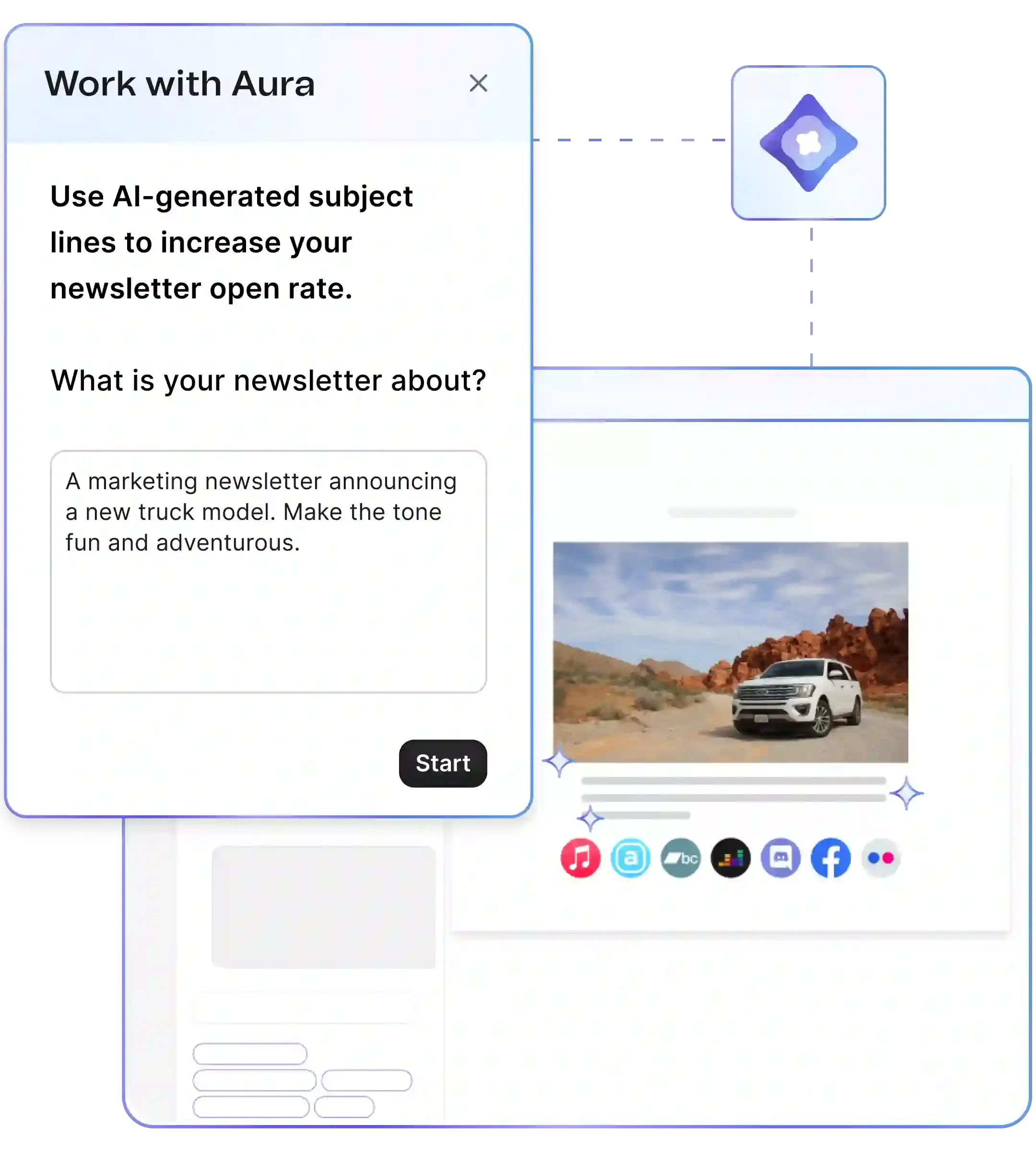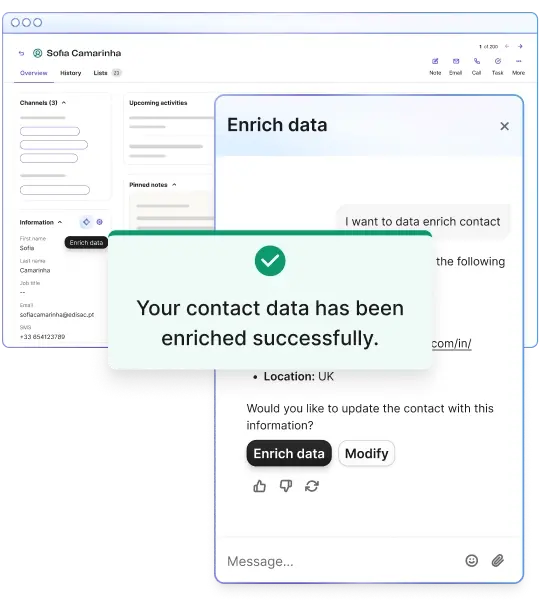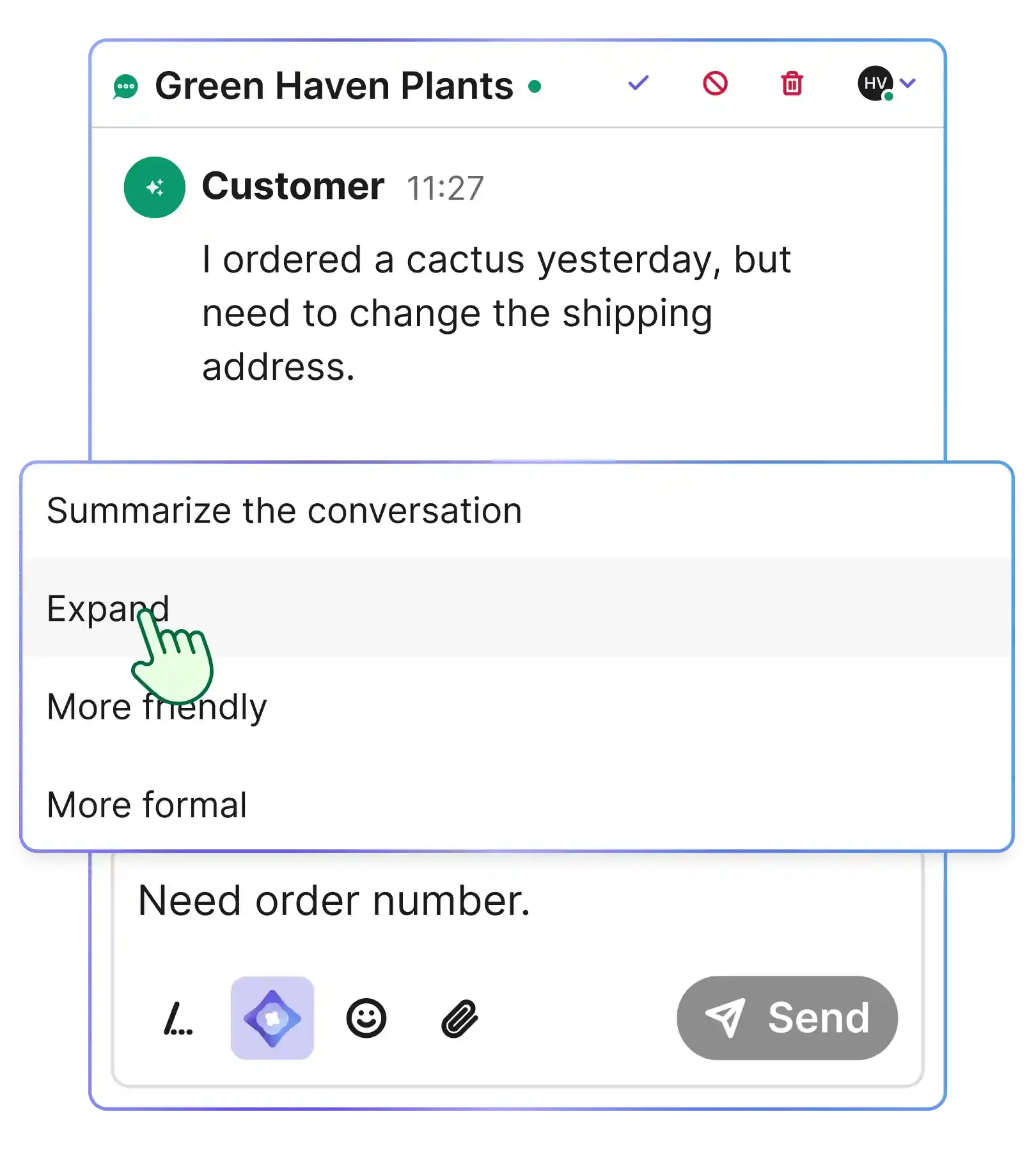INTELIGENCIA ARTIFICIALAgentes IA Brevo:
Agentes IA Brevo:
impulsa tu crecimiento
Desbloquea nuevos niveles de eficiencia, creatividad y expansión sin límites.
Estamos creando una IA que trabaja contigo y para ti

IA que pasa a la acción
Nuestros agentes de IA no sólo analizan, sino que también ejecutan. Desde la personalización de campañas hasta el soporte de ventas, optimizan tareas para que puedas centrarte en la estrategia.
Agentes especializados para generar impacto
Diseñados para roles específicos como la optimización de campañas de email y la segmentación de audiencias, nuestros agentes ofrecen una ejecución experta en cada tarea.
IA que funciona para todos
Hacemos que la IA avanzada sea accesible para todos. Ya seas una pequeña empresa o una corporación global, activar nuestros potentes agentes es fácil.Conoce Aura: IA lista para generar resultados
AI Marketing Agent
Crea contenido de alto impacto en segundos
Utiliza prompts para generar contenido nuevo o mejorar textos al instante. Segmenta automáticamente audiencias según información en tiempo real, envía mensajes en el momento óptimo y ofrece recomendaciones de productos dinámicas.
AI Sales Assistant
Optimiza tu proceso de ventas y cierra más acuerdos
Automatiza la creación de oportunidades de venta, enriquece contactos al instante y genera emails de ventas listos para enviar. La IA se encarga de las tareas repetitivas para que tú te concentres en vender.
AI Conversation Agent
Optimiza el soporte y mejora la experiencia del cliente
Resume chats en vivo en un clic, ajusta respuestas al tono deseado y convierte notas rápidas en mensajes bien estructurados, permitiendo que tu equipo responda de manera más ágil y efectiva.



Potencia tu conocimiento con nuestros recursos de IA


